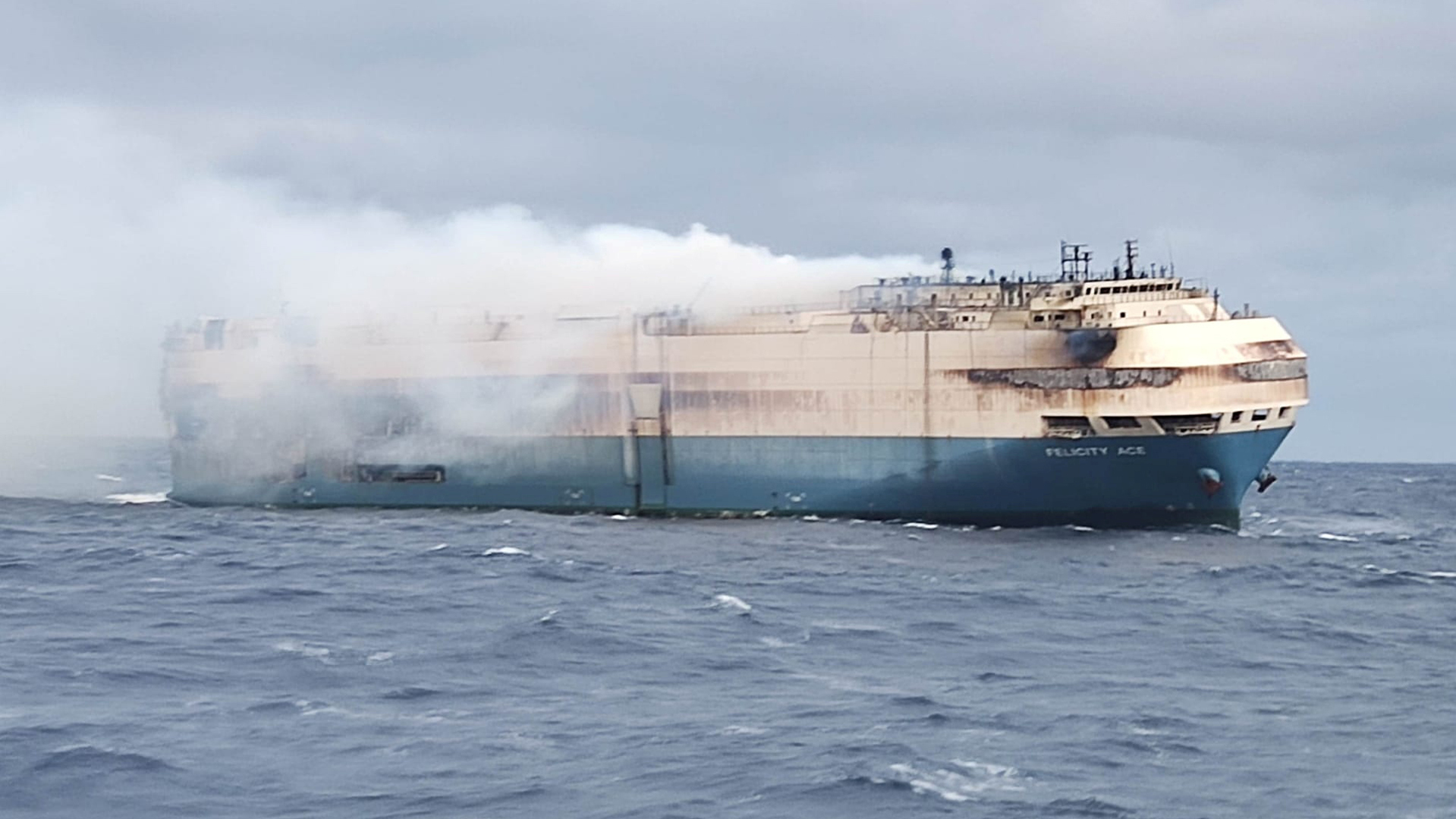
Cargo ships carrying electric vehicles are catching fire with costly and deadly results.
Over the summer, a boat called the Fremantle Highway was carrying nearly five hundred EVs off the Dutch coast when went it up in flames, killing one person onboard.
The incident left 22 others injured, some of whom had to abandon ship in order to escape the fire.
The Fremantle Highway burned for about a week, highlighting the challenges an EV battery fire can pose at sea.
This incident, and others like it, have prompted the UN’s International Maritime Organization to take action.
EV battery fires burn with twice the energy of a normal fire and can require more than 10 times the amount of water to put out compared to when a car with a gas engine is set ablaze.
Sometimes these types of fires can reignite even after they’ve been extinguished.
So, member states are now exploring the creation of additional precautions for shipping companies that transport vehicles powered by lithium-ion batteries.
The International Maritime Organization’s head of safety said quote “lithium batteries have been recognized as potentially hazardous when it comes to fire risk. So we need to ensure that the regulations take into account those risks.”
Shipowners have also indicated they are looking to redesign car carriers, upgrade fire prevention measures and mitigate the threat to lives and global trade posed by the batteries.
Until new measures are taken, a troubling trend may continue.
A report released in May found that shipping fires on cargo vessels increased 17% to a decade high last year.
A number of these incidents involved EVs.
Including a fire on a ship in the Atlantic Ocean that resulted in the loss of $155 million dollars worth of Volkswagen vehicles.
The vessel’s captain claimed that the lithium-ion batteries within the EVs being transported were quote “keeping the fire alive” as the crew worked to put it out.
Ultimately, the ship capsized and sank 13 days after the fire broke out as a salvage team was attempting to tow it to shore.
In light of the risks associated with transporting electric vehicles, some insurance providers are charging one and half times more for cargo ships carrying them than the price for those with combustion engines.
The International Union of Marine Insurance is advocating for the development of new firefighting techniques to tackle future EV battery fires on vessels.
Some in the industry are also discussing the implementation of new crew member evacuation routes and fully contained storage for EVs that aim to limit the spread of potential fires.
A marine risk management consultant with RSA Insurance has said that current safety regulations weren’t built to handle EVs, and while the shipping industry is moving forward to correct this, it isn’t happening at a quick enough pace.







